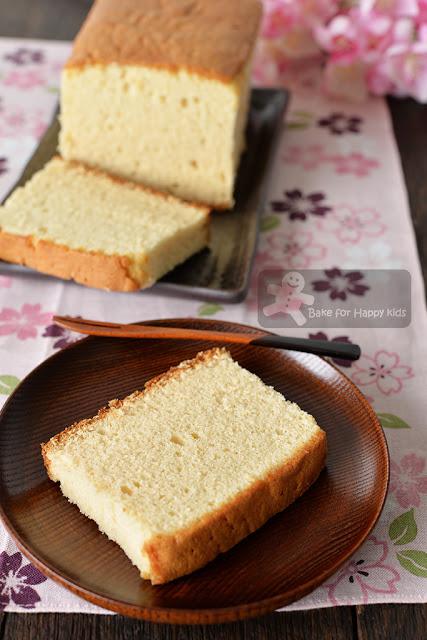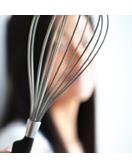After baking and enjoying my first bite of this cake, my eyes were beaming because I know that I have found THE best Castella Cake recipe!
And I think that it is fail proof too!!!
The Best Japanese Castella Cake / Kasutera カステラ
Did I just said that this Castella Cake recipe is the best? Yup!
Remember I said before at here that my aim is to bake is a typical Castella cake that is like a honey pound cake, smooth and dense with fine crumbs. It must be moist with NO greasy touch or taste. And I have to say that this recipe yields a beautiful Castella cake that is closest to what I'm after. YAY!!!!!!!!!!!
Did I just said that this Castella Cake recipe is fail proof? Yup!
Without going through 1) the beating the whole eggs and sugar into a voluminous mixture or 2) the maintaining the egg temperature at 38°C or 3) having the worries of deflating the fluffy batter when mixing in the honey and flour into the entire cake batter, I actually felt less stressful when I was baking with this recipe using the egg separation method. Best is that the cake will rise very evenly to a tall height and won't shrink much when it is cooled completely at room temperature. Isn't this fail proof?
Having said that, I won't vouch that this recipe is entirely fail proof if these following essential steps are followed properly!!! So, please take note...
1) Please ensure that all ingredients especially the eggs are in room temperature, not cold or chilled!
2) Please use the exact weight of all ingredients especially the eggs again because any difference can affect the overall texture of your cake.
3) If you don't have a bottomless wooden frame to bake your Castella cake, you can line the sides of your standard metal baking loaf pan with 2 or more layers of foil (not baking paper!) with reference to my previous post at here.
4) As Castella cakes are baked slowly to create an uniform spongy texture, please avoid using high oven temperature and fan forced baking function. Plus, please be aware that all ovens can operate differently and you might have to use a different oven temperature setting from mine to bake your cakes more successfully. To do so, please see here for a few strategies that you might wish to try.
5) To be on the safe side, it is always better to over-bake your cake slightly than under-baking it because the uncooked cakes will shrink into a short yucky gummy cake when they are cooled at room temperature. To gauge, you will see that the cake is ready when it bounce back after it is lightly pressed with your finger and you can't use an inserted skewer to test its doneness.6) Last but not the least, please please please follow the recipe as close as possible. Please do not ask me if you can alter or substitute this or that because I have not try baking this recipe with any changes and won't commit if your proposing actions will work or not. It might but I don't know :)
Are we all clear? Now, let's bake this gorgeous cake...
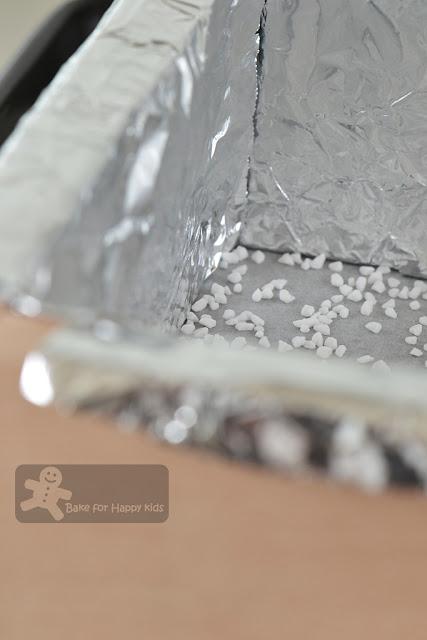
Exactly like what I did previously at here and here, I lined the side of my wooden Castella pan with foil and sprinkle pearl sugar at its bottom.

Unlike the "original" type of Castella cakes, this recipe requires the addition of oil and milk.
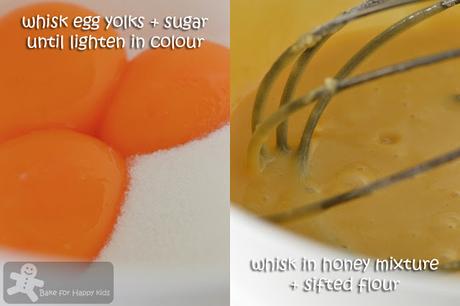
Unlike the "traditional" way of mixing Castella cake batter, this recipe requires the separation of egg yolks and whites. For the egg yolks mixture, I did this.
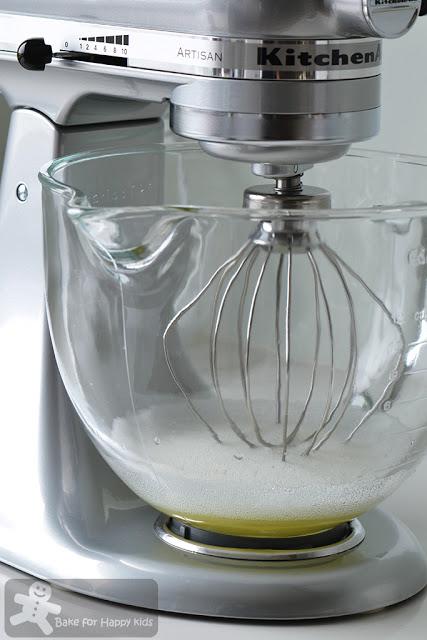
For the egg white mixture, I used an electric mixer to beat in medium low speed the egg whites until foamy.
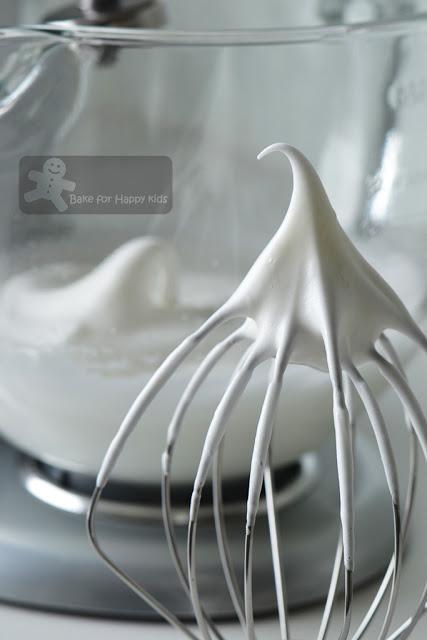
Then, increase beating speed to medium but not too high to avoid large bubbles forming. While beating, add sugar gradually and continue to beat until stiff peaks form and the meringue look glossy and smooth like this.
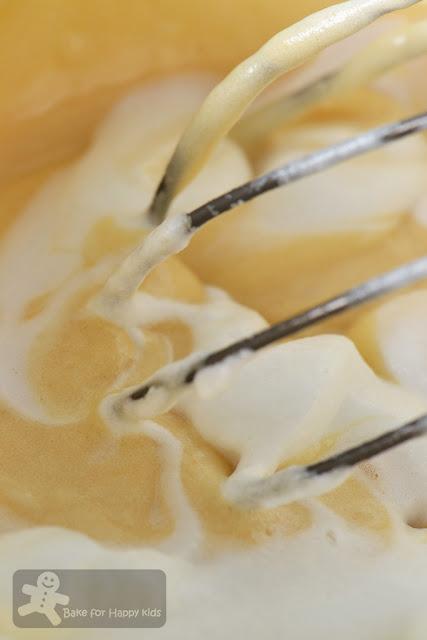
Combine both egg yolks and egg whites mixture. Then pour the batter into the prepared pan and bake.
Easy? Not too difficult lah :)
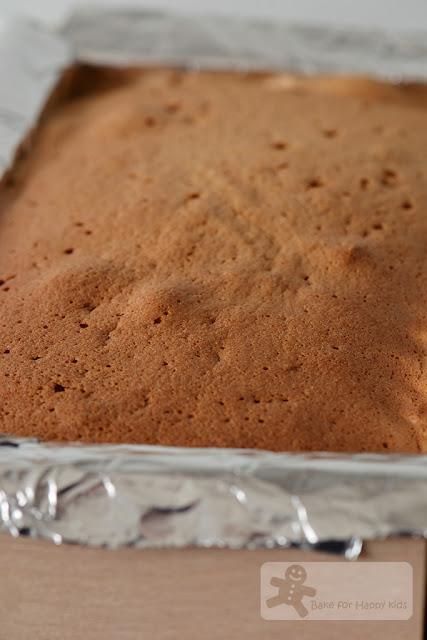
After baking... See the cake has risen to a nice tall height.
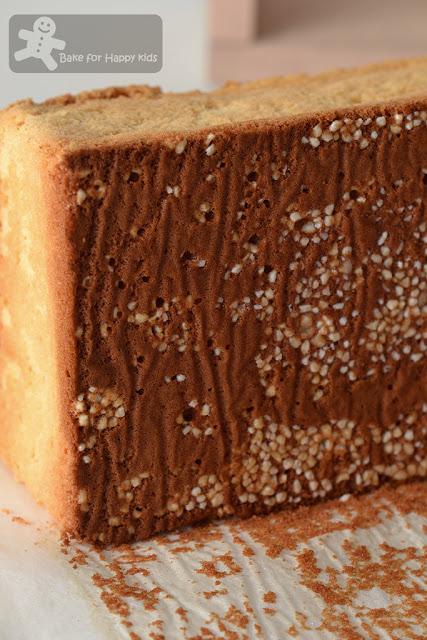
After removing the baking paper at its bottom...
And I was like OMG! It looks so perfect!
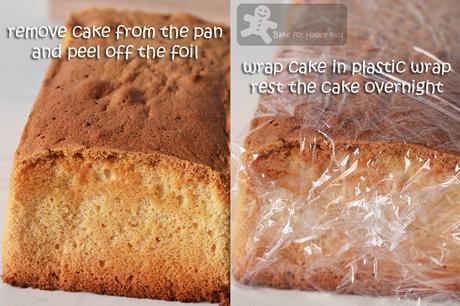
Like all Castella cakes, I can't slice and serve the cakes straightaway after baking. I have to wait...
I have to say... This is torturing! Notice that the cake didn't shrink a lot.
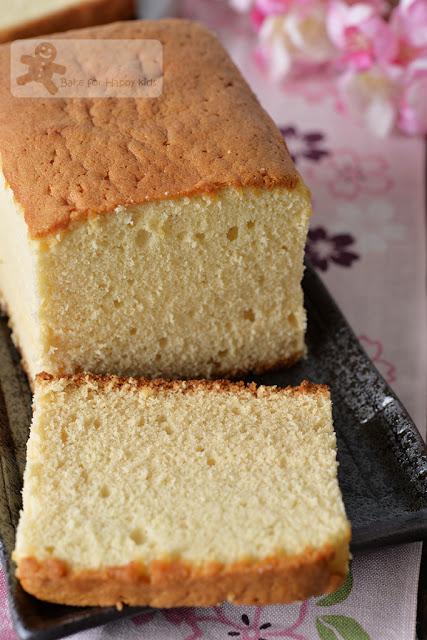
On the next morning, I sprang out of bed knowing that I'm going to eat my perfect-looking Castella cake...
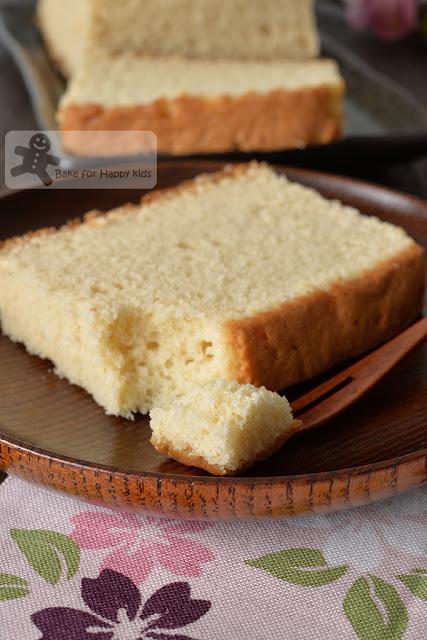
And I was like OMG again! It looks and tastes so perfect!
Imagine. After my first bite of this cake, I was like Yay!!! and was waving my hands in the air like I don't care... LOL! My son did the same too and we both agreed that this Castella cake recipe is way BETTER than the previous two at here and here. So good that I would say that it is the BEST at this point of my Castella baking adventure.
Need more help with this recipe? You might want to watch this one-minute video of me baking this Castella cake.
So once again, I asked myself...
Is this recipe my ideal kind of recipe? Yes!!!
Is beating the eggs separately make a better Castella cake? Confirmed! After baking this recipe plus the recipe at here, I will bake my future Castella cakes with the egg separation method.
Does the addition of oil bake a better Castella cake? Yes!!! And I'm happy that I don't have to use cake stabiliser to bake a gorgeous Castella cake!
Is this the end of my Castella cake cake baking adventure? Hmmm... Not yet! LOL!
Despite the above conclusions, I would still like to explore more recipes to answer these questions:
1. Can the recipe with more eggs and less flour make a better Castella cake with more chewy and bouncier texture?2. Will the addition of other interesting ingredients like condensed milk and brown sugar will improve the taste and texture of the Castella cake?Stay tune if you are interested and I will tell you more that I know in my subsequent Castella cake posts :)
Here's the recipe that is mostly adapted from Cookpad at here.
Make one 17.5 x 10.5 x 8 cm or 10 x 20 x 8 cm Castella cake
Please weigh all ingredients and use the exact weight.
For the egg yolk mixture:
50g milk30g vegetable oil, preferably smooth and neutral tasting
40g (about 2 tbsp) honey
45g egg yolks (about 3 egg yolks), at room temperature
60g caster sugar
115g bread flour with about 12% protein
For the egg white mixture:
105g egg whites (about 3 egg whites), at room temperature60g caster sugar
2 tbsp pearl sugar to sprinkle the bottom of the cake, optional
Place a baking rack in the middle of the oven. Preheat oven to 180°C / 350°F with NO fan forced.
Line the internal sides of your cake or loaf pan with aluminum foil and a piece of baking paper to fit its bottom. Sprinkle the bottom of the lined pan with pearl sugar if desired and this step is optional. If you are using 10 x 20 cm standard loaf metal pan, please see here for instructions and photos to prepare your metal loaf pan for your Castella cake baking.
For the egg yolk mixture:
Place milk, oil and honey in a saucepan or heat proof bowl. Cook mixture in the saucepan using the stove with low heat or microwave mixture in the heat proof bowl with short pulses of low power until the honey dissolves into the mixture. Do not over-cook the mixture until it boils because overcooking the mixture will cause it to curd!!! Set aside for the mixture to cool slightly, about 10 mins.Place egg yolks and sugar in a large mixing bowl and use a hand whisk to beat until mixture turns lighter in color. Whisk in the honey mixture. Sift flour into egg yolk mixture and whisk until everything is combined.
For the egg white mixture:
Using an electric mixer with a whisk attachment, beat egg whites in medium low speed until foamy. Increase beating speed to medium (not too high to avoid large bubbles forming). While beating, add sugar gradually and continue to beat until stiff peaks form and the meringue look glossy. Do not over beat the mixture.To combine and bake:
Using a hand whisk or a spatula, fold in the egg whites to the egg yolks mixture in 3 portions. It's ok to mix the first batch of egg white mixture kind of vigorously into the egg yolk mixture but please ensure that the subsequent batches are mixed in very gently until most of the white is not visible after folding.Pour batter into the prepared pan. Gently drop the pan onto the kitchen bench from a height of 10 cm to remove any large air bubbles and do this just once. If you are afraid of doing this, you can use a skewer to draw a zigzag to remove air bubbles in the batter. You can choose to do either one of these steps or both but do not over-do these steps.
Place pan in the middle rack and bake for 10 mins. Decrease temperature to 140°C / 285°F and bake for another 60 mins, or until the cake is thoroughly cooked and must has a nice golden brown top. NOTE: (1) An inserted skewer or cake tester is not a good gauge to see if the cake is thoroughly cooked. (2) Different oven is different. To optimize your baking, you might wish to try other oven temperature setting that I have mentioned earlier in this post.
Allow the cake to cool with the foil until the cake is still warm but cooled enough to touch. Remove the cake out of the pan, peel off the foil and the baking paper at its bottom and wrap the cake in plastic wrap. Place cake in an airtight container or a zip lock bag and allow it to rest in room temperature so that the cake will moisten by itself for at least one day.
Slice and serve on the next day. Store the uneaten cake in airtight container for up to 3 days in room temperature.
Happy BakingPlease support me and like me at Facebook...
